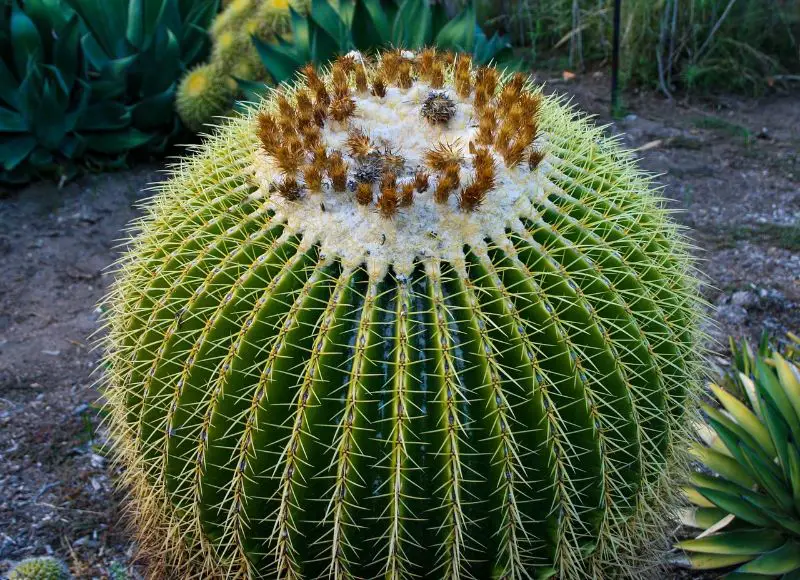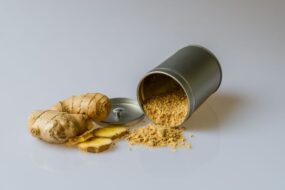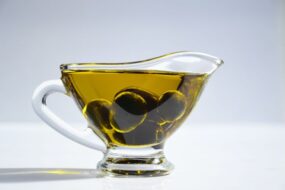
Cactus is a plant used for centuries by indigenous populations as a food source and natural remedy for various health problems.
Recently, cactus has gained popularity as a weight-loss aid due to its many health benefits, including its ability to regulate blood sugar levels and promote fat excretion.
In this article, we’ll explore the different types of cactus that can be used for weight loss, how to incorporate cactus into your diet, and the various health benefits associated with cactus consumption.
Table of Contents (click to expand)
What is Cactus?
The Cactus is a plant that belongs to the family Cactaceae. There are over 2,000 cactus species, some being edible and having medicinal properties. The two most common types of cactus used for weight loss are the prickly pear cactus and the nopal cactus.
Related: How to Weigh Food for Weight Loss to Reduce Content Size
Prickly Pear Cactus for Weight Loss
The prickly pear cactus, also known as Opuntia ficus-indica, is found in Mexico, the southwestern United States, and other arid regions worldwide. Prickly pear cactus fruit, or prickly cactus pear fruit, is known for its sweet flavor and high nutritional value. It contains antioxidants, vitamins, minerals, and dietary fiber, which can contribute to its potential weight loss benefits.
According to one study published in the journal Nutrition, consuming prickly pear cactus pads as part of a balanced diet could reduce body weight and improve cardiovascular health.
Another study in the Journal of Nutrition and Metabolism found that consuming prickly pear and cactus juice could help reduce blood glucose levels and increase fecal fat excretion. These factors can contribute to weight loss.
Nopal Cactus for Weight Loss
Nopal cactus, or Opuntia cacti, is used for its potential health benefits, including high dietary fiber content that can help regulate blood sugar levels and promote a feeling of fullness.
One study published in the Journal of Ethnopharmacology found that consuming nopal cactus as part of a healthy diet helped reduce internal inflammation and LDL cholesterol levels in healthy subjects. Another study in the Journal of Functional Foods found that consuming cactus fiber could improve digestion and reduce gastrointestinal distress in pre-diabetic males.
Nopal cactus has been used for centuries by indigenous cultures in Mexico and the Southwestern United States for its potential medicinal properties. It’s been used to treat diabetes, high cholesterol, and ulcers. It is a dietary supplement due to its high content of vitamins and minerals, such as vitamin C, calcium, potassium, and magnesium.
Both types of cacti are also used as food sources. The young nopal cactus pads, often called nopales, are commonly used in Mexican cuisine. Similarly, the fruit of the prickly pear cactus, known as the cactus pear fig or tunas, is sweet and can be eaten raw or used in jams, jellies, and desserts.
Related: How to Make Cucumber Water for Weight Loss: A Refreshing Recipe for Health and Wellness
Despite the potential health benefits, it’s essential to understand that cacti should not be consumed as the sole solution for weight loss or other health conditions. A balanced diet and regular physical activity are crucial for maintaining a healthy weight and overall wellness.
Before starting any new supplement or dietary change, discussing it with a healthcare provider is advised, as some individuals may have allergies or other contraindications to consuming cactus.
Cacti, specifically the prickly pear and nopal varieties, can be valuable additions to a balanced diet due to their high nutritional value and potential health benefits. However, more research is needed to confirm and understand these benefits better.
How to Use Cactus for Losing Weight
Incorporating cactus into your diet and reducing body weight is easy and can be done in various ways. Here are some tips on how to use cactus to lose weight.
Drink Cactus Juice
Cactus juice, made from the fruit or the cactus pads, is an easy and refreshing way to introduce cactus into your diet. You can find bottled cactus juice in most health food stores. It can be consumed independently or blended with other fruit juices for a unique flavor combination.
One study, as published in the journal Epidemiology and Clinical Aspects, found that regular intake of cactus juice could help regulate blood glucose levels and reduce inflammation in healthy individuals, leading to potential weight loss benefits.
Eat Cactus Pads
Cactus pads, also known as nopales, are the flat, paddle-shaped parts of the prickly pear cactus plant. They are rich in dietary fiber, vitamin C, and essential amino acids. These pads can be cooked and eaten as a vegetable side dish, sliced and added to salads for a crunchy texture, or blended into smoothies for added fiber and nutrients.
The World Health Organization affirms that the nutrient-rich nature of cactus pads can contribute to a balanced, healthy diet.
Make Cactus Smoothies
Consider making a cactus smoothie for a nutritious and potentially weight-loss-promoting drink. To prepare this, blend cleaned prickly pear cactus pads or nopal cactus with other fruits like bananas, mangoes, or strawberries, vegetables like spinach or kale, and liquids like coconut water, almond milk, or orange juice.
According to a study published in Appetite, adding cactus fiber to such beverages could increase fecal fat excretion, possibly aiding in weight management and loss efforts.
Cook with Cactus
Cactus can be a versatile ingredient in your cooking. The prickly pear cactus pads can be sliced, grilled, and added to dishes for a unique flavor and texture. Nopal cactus can be sautéed with other vegetables and spices to create a flavorful, healthy dish.
You can incorporate cactus into various cuisines, but it’s widespread in Mexican food, where it is used in dishes like nopales salad, cactus soup, and huevos con nopales (eggs with cactus).
Related: How to Raise Your Core Body Temperature for Weight Loss
Benefits of Using Cactus for Weight Loss
In addition to its potential weight loss benefits, consuming cactus can contribute to overall wellness in numerous ways. Here are the primary reasons why cactus should be considered as part of a balanced diet:
Regulates Blood Sugar Levels and Reduces the Risk of Diabetes
One of the critical benefits of cactus, mainly the prickly pear and nopal varieties, is their potential to help regulate blood sugar levels. They are high in fiber and pectin, a type of soluble fiber that slows down the absorption of sugar in the stomach and intestines.
This can help prevent spikes and crashes in blood sugar levels, which is particularly beneficial for people with diabetes or pre-diabetes. A study published in the Journal of Ethnopharmacology showed that consuming nopal cactus could significantly reduce blood glucose levels in the placebo group of individuals with type 2 diabetes.
Promotes Digestive Health and Regulates Cholesterol Levels
Cactus is rich in dietary fiber, which aids digestion by promoting regular bowel movements, thus helping prevent constipation.
It can also help regulate cholesterol levels, as the fiber binds to cholesterol in the digestive system and helps to remove it from the body. This process could potentially reduce the risk of heart and cardiovascular disease.
It contains Antioxidants that Reduce Oxidative Stress and Fight Inflammation
Cactus is rich in antioxidants, including flavonoids, polyphenols, and betalains, which can combat oxidative stress, a critical factor in chronic diseases like heart disease, cancer, and neurodegenerative disorders.
These antioxidants fight inflammation, often due to injury, infection, or exposure to harmful substances. Reducing inflammation can help prevent chronic diseases and improve overall health.
Promotes Cardiovascular Health
Cactus can contribute to cardiovascular health in several ways. It is known to help reduce high blood pressure, a key risk factor for heart disease, due to its high potassium content. Additionally, as mentioned earlier, its dietary fiber content can assist in regulating cholesterol levels.
Moreover, the antioxidants in cactus can help prevent the oxidation of cholesterol, a process that can lead to the formation of plaques in the arteries. These benefits suggest that cactus can be a heart-healthy addition to your diet.
Side Effects and Precautions
While cactus is generally considered safe and well-tolerated, it can cause some side effects in specific individuals. These include nausea, diarrhea, and gastrointestinal distress. Additionally, cactus should not be used as a replacement for medical treatment for diabetes or any other health condition.
If you are pregnant or breastfeeding, it’s also important to consult your healthcare provider before using cactus for weight or dietary fat loss, as its safety has not been established in these groups.
Related: How to Make Lemon Water for Weight Loss
FAQs About Using Cactus for Weight Loss
Can cactus help you lose weight?
Cactus shows promise as a weight-loss aid due to its potential to regulate blood sugar levels, promote satiety, and increase fecal fat excretion. However, more research is needed to determine its effectiveness for weight loss in healthy humans only.
Is cactus safe for everyone to consume?
While cactus is generally considered safe and well-tolerated, it can cause gastrointestinal distress in some individuals. Additionally, cactus should not be used as a replacement for medical treatment for diabetes or any other health condition.
How Much Cactus Juice Should I Drink a Day?
The appropriate amount of cactus juice to drink daily can vary depending on individual dietary needs, goals, and tolerance. As a general guideline, a daily intake of one to two cups (8 to 16 ounces) is often recommended.
However, it’s always best to consult with a healthcare provider or a registered dietitian for personalized advice, as overconsumption can lead to digestive upset in some individuals.
What Are the Side Effects of Drinking Cactus?
While cactus juice offers many health benefits, it can cause side effects in some individuals. These may include mild digestive upset, such as diarrhea, nausea, or bloating, mainly when introducing cactus into your diet for the first time or consuming it in large amounts.
Also, specific individuals may have an allergic reaction to cactus, resulting in symptoms like itching, swelling, dizziness, or trouble breathing. If you experience adverse reactions after consuming cactus, seek medical attention immediately.
Can You Drink Cactus Water every day?
You can drink cactus water daily as part of a balanced diet. It’s a hydrating drink that’s often lower in sugar than traditional fruit juices, making it a healthier choice for daily consumption.
As with cactus juice, moderation is key. Also, consume various other beverages (like water, herbal teas, etc.) to ensure you get a wide range of nutrients and do not over-consuming any particular one.
Is Nopales Good for Losing Weight?
Nopales, or nopal cactus pads, can be a beneficial part of a weight loss plan. They’re low in calories and high in fiber, which can promote feelings of fullness and prevent overeating.
Additionally, nopales are high in essential nutrients like vitamins A, C, K, and B6 and minerals such as calcium, magnesium, and potassium. However, nopales should be included in a balanced diet and healthy lifestyle for weight loss rather than being relied upon as a single solution.
Is It Good to Eat Cactus every day?
Eating cactus daily can offer many health benefits, including blood sugar regulation, improved digestive health, and antioxidant benefits, as part of a balanced diet.
However, it’s essential to ensure your diet is varied and includes a wide range of fruits, vegetables, whole grains, proteins, and healthy fats to provide all the nutrients your body needs.
As with any dietary change, it’s advisable to consult a healthcare provider or a dietitian before incorporating cactus daily into your diet, especially if you have any existing health conditions or allergies.
Tips for Buying and Storing Cactus
When buying cactus, look for fresh, undamaged pads or fruit. If buying cactus juice, ensure it is 100% pure and free from added sugars or preservatives.
Cactus can be stored in the refrigerator for up to one week. Place prickly pear fruit in a paper bag and store them in a cool, dry place.
Related: How to Make a Homemade Body Wrap for Weight Loss: 20 Easy Steps
Conclusion
Cactus is a versatile and nutritious plant that offers many health benefits beyond its potential for weight loss. Incorporating cactus into your diet is easy and can be done in various ways, from consuming cactus juice to adding cactus pads to your favorite dishes.
While more research is needed to determine how cactus promotes weight loss, its many health benefits make it a valuable addition to any healthy lifestyle.





































